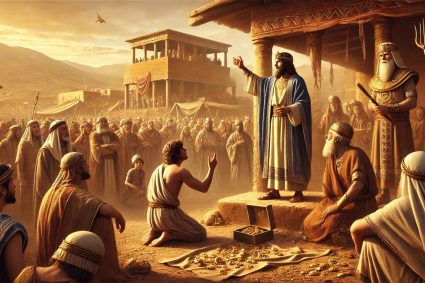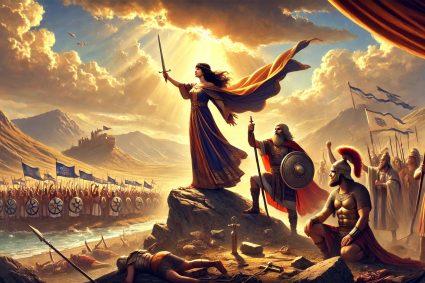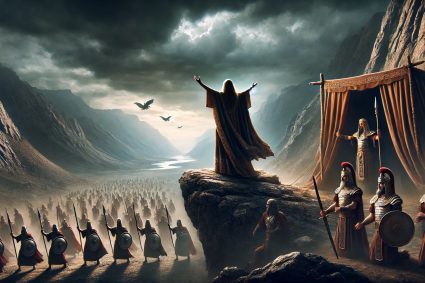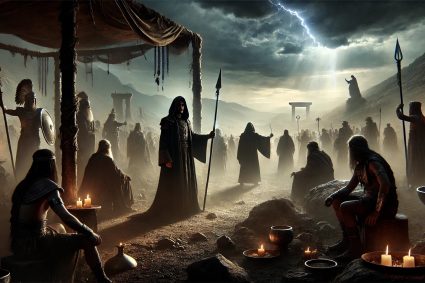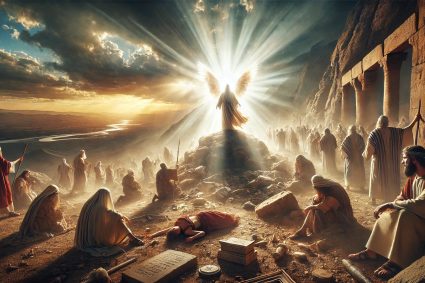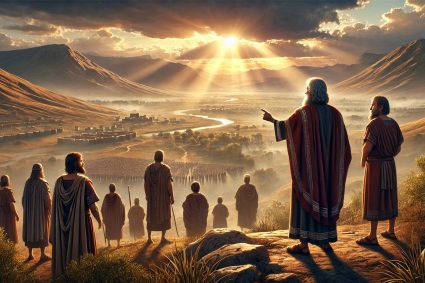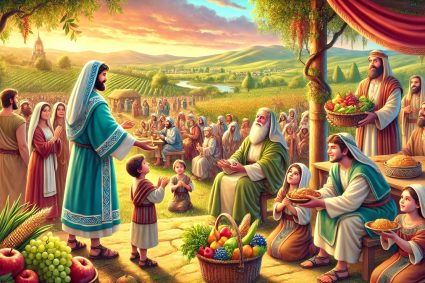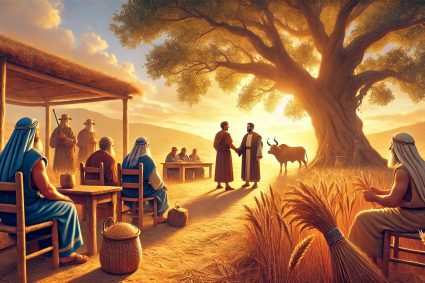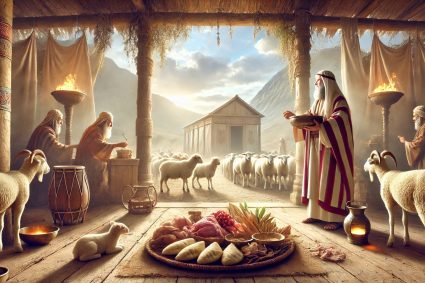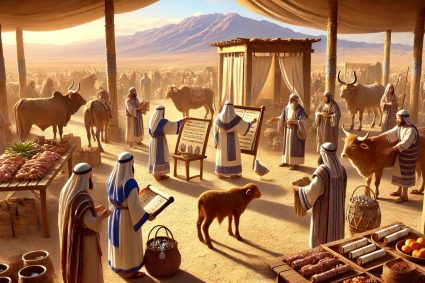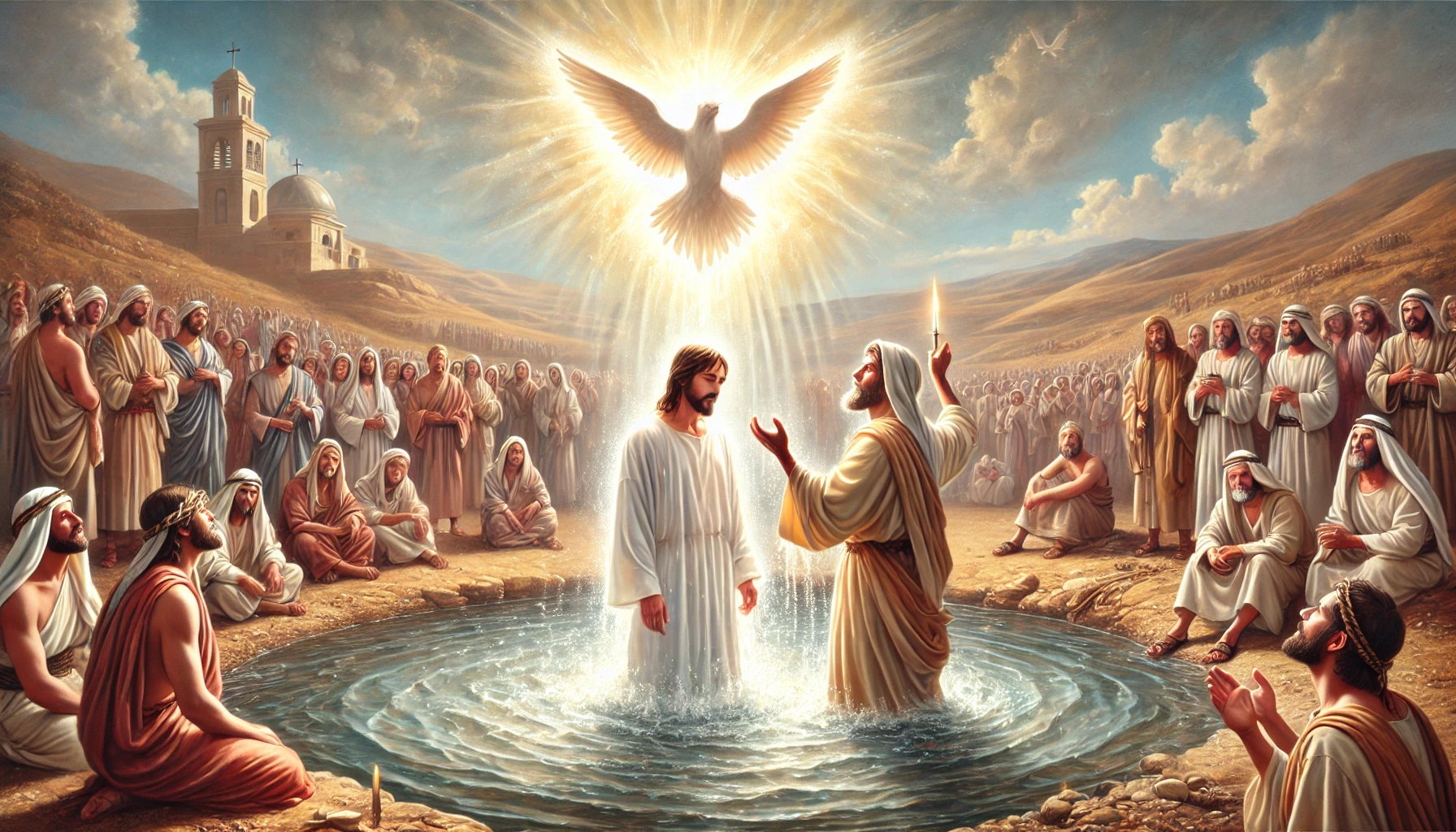
August 2, 2024
DAILY BIBLE READING – Matthew Chapter 3
1 In those days came John the Baptist, preaching in the wilderness of Judaea,
2 And saying, Repent ye: for the kingdom of heaven is at hand.
3 For this is he that was spoken of by the prophet Esaias, saying, The voice of one crying in the wilderness, Prepare ye the way of the Lord, make his paths straight.
4 And the same John had his raiment of camel’s hair, and a leathern girdle about his loins; and his meat was locusts and wild honey.
5 Then went out to him Jerusalem, and all Judaea, and all the region round about Jordan,
6 And were baptized of him in Jordan, confessing their sins.
7 But when he saw many of the Pharisees and Sadducees come to his baptism, he said unto them, O generation of vipers, who hath warned you to flee from the wrath to come?
8 Bring forth therefore fruits meet for repentance:
9 And think not to say within yourselves, We have Abraham to our father: for I say unto you, that God is able of these stones to raise up children unto Abraham.
10 And now also the axe is laid unto the root of the trees: therefore every tree which bringeth not forth good fruit is hewn down, and cast into the fire.
11 I indeed baptize you with water unto repentance. but he that cometh after me is mightier than I, whose shoes I am not worthy to bear: he shall baptize you with the Holy Ghost, and with fire:
12 Whose fan is in his hand, and he will throughly purge his floor, and gather his wheat into the garner; but he will burn up the chaff with unquenchable fire.
13 Then cometh Jesus from Galilee to Jordan unto John, to be baptized of him.
14 But John forbad him, saying, I have need to be baptized of thee, and comest thou to me?
15 And Jesus answering said unto him, Suffer it to be so now: for thus it becometh us to fulfil all righteousness. Then he suffered him.
16 And Jesus, when he was baptized, went up straightway out of the water: and, lo, the heavens were opened unto him, and he saw the Spirit of God descending like a dove, and lighting upon him:
17 And lo a voice from heaven, saying, This is my beloved Son, in whom I am well pleased.
King James Version. Public Domain
Commentary
Introduction:
Matthew Chapter 3 describes the beginnings of John the Baptist’s ministry and the baptism of Jesus. This section of the Bible highlights John’s central role as the forerunner for the coming of Jesus Christ and sets the framework for understanding repentance and divine justice. John is portrayed as a charismatic yet challenging preacher who calls both the crowds and the religious leaders of his time to a new awareness and a change of life.
Commentary:
The passage begins with a description of John the Baptist preaching in the wilderness and calling people to repentance because the Kingdom of Heaven is near (verses 1-2). John is identified as the one foretold in the prophecy of Isaiah, as the voice crying out in the wilderness to prepare the way of the Lord (verse 3). This prophecy emphasizes the significance of John’s mission to prepare the people for the coming of Jesus.
John’s appearance and lifestyle are deliberately simple and ascetic, underscoring his message of repentance and conversion (verse 4). His clothing made of camel hair and his simple diet symbolize his renunciation of worldly comforts and his focus on the divine.
People from Jerusalem, Judea, and the surrounding areas came to John to be baptized and to confess their sins (verses 5-6). Baptism in the Jordan symbolizes purification and readiness for conversion. However, John’s message also confronts the Pharisees and Sadducees, whom he calls a “brood of vipers” (verse 7). He urges them to produce fruit in keeping with repentance rather than relying on their descent from Abraham (verses 8-9). Here, it becomes clear that true repentance is more than outward rituals—it must be reflected in a transformed life.
John announces that the one coming after him is more powerful and will baptize with the Holy Spirit and fire (verse 11). This announcement points to the superior power and authority of Jesus, who will not only baptize outwardly but also transform inwardly through the Spirit. The metaphor of the winnowing fork and the fire (verse 12) symbolizes the judgment, where the good will be separated from the bad.
Verses 13-17 describe the baptism of Jesus. Although John initially refuses to baptize Jesus, considering himself unworthy (verse 14), Jesus insists in order to “fulfill all righteousness” (verse 15). This act shows Jesus’ submission to God’s will and marks the beginning of his public ministry. Jesus’ baptism is accompanied by a divine revelation: the heavens open, the Spirit of God descends in the form of a dove, and a voice from heaven proclaims Jesus as God’s beloved Son, with whom He is well pleased (verses 16-17). This scene confirms Jesus’ divine sonship and his special role in God’s plan of salvation.
Summary:
Matthew 3 is a central chapter in the New Testament that describes the prophetic mission of John the Baptist and the baptism of Jesus. It underscores the necessity of repentance, the preparation for the coming of Christ, and the confirmation of Jesus as the Son of God. John the Baptist appears as a powerful forerunner who calls people to repentance and points to the arrival of the Messiah, while Jesus’ baptism marks the beginning of his messianic mission and confirms his divine calling.
![]()

WEEKLY SPIRIT OF PROPHECY READING – Ellen White | The Desire of Ages Chapter 51: The Light of Life
This chapter is based on John 8:12-59; John 9.
Read online here
Commentary
Introduction: Jesus as the Light of the World (John 8:12)
Jesus declares in the temple that He is the light of the world and promises that those who follow Him will not walk in darkness but will have the light of life. This statement is made during the Feast of Tabernacles, where large lamps in the temple courtyard illuminate Jerusalem and remind the people of the pillar of fire that guided Israel in the wilderness. Jesus uses this symbol to highlight His mission as a spiritual light meant to illuminate the darkness of the world.
The Significance of Light in the Bible
Light is a recurring symbol in the Bible for God’s presence and revelation. From the light of creation to the pillar of fire that guided Israel in the wilderness and the light that accompanied the dedication of Solomon’s temple, light stands for God’s guidance and proximity. Jesus, as the light of the world, embodies God’s essence and His relationship with humanity. He is the true light that enlightens every person (John 1:9).
Jesus and Abraham (John 8:56-58)
Jesus emphasizes His eternal existence and His relationship with Abraham, which the Pharisees perceive as presumptuous. He explains that Abraham rejoiced at the prospect of Jesus’ day. By saying, “Before Abraham was, I am,” Jesus claims divine existence and identity, which the Pharisees see as blasphemy and therefore want to stone Him.
The Healing of the Man Born Blind (John 9)
In John 9, Jesus heals a man who was born blind. This healing demonstrates that God’s works are revealed through Jesus. The disciples and the Pharisees inquire about the cause of the blindness, but Jesus shifts the focus to the outcome: the revelation of God’s power and grace. This healing occurs on the Sabbath, prompting the Pharisees to again condemn Jesus as a lawbreaker.
The Pharisees’ Reaction
The Pharisees attempt to deny the miracle and intimidate the healed man and his parents. However, the formerly blind man bravely defends Jesus and points to the obvious divine origin of his healing. This defense leads to his expulsion from the synagogue. Jesus seeks him out and fully reveals Himself to him, whereupon the man worships Jesus as the Son of Man.
Spiritual Blindness of the Pharisees
Jesus uses the healing of the man born blind to highlight the spiritual blindness of the Pharisees. They claim to see, but they reject the true light that Jesus offers. Their self-righteousness and pride prevent them from recognizing the truth, thus their sin remains.
Summary
Chapter 51 underscores the profound significance of Jesus’ declaration, “I am the light of the world.” Jesus brings not only physical but also spiritual light into the world, revealing God’s truth and saving people from the darkness of sin. The healing of the man born blind serves as a practical example of Jesus’ mission and the necessity of accepting spiritual light. The Pharisees, however, remain trapped in their self-righteousness and reject the life-changing light that Jesus offers.
(Visited 16 times, 1 visits today)


